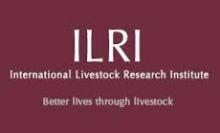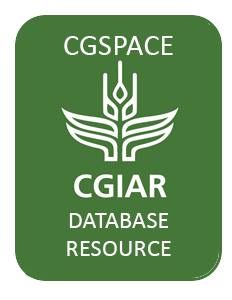Location
Vision, mission and strategy
ILRI's strategy 2013-2022 was approved in December 2012. It emerged from a wide processof consultation and engagement.
ILRI envisions... a world where all people have access to enough food and livelihood options to fulfil their potential.
ILRI’s mission is... to improve food and nutritional security and to reduce poverty in developing countries through research for efficient, safe and sustainable use of livestock—ensuring better lives through livestock.
ILRI’s three strategic objectives are:
- with partners, to develop, test, adapt and promote science-based practices that—being sustainable and scalable—achieve better lives through livestock.
- with partners,to provide compelling scientific evidence in ways that persuade decision-makers—from farms to boardrooms and parliaments—that smarter policies and bigger livestock investments can deliver significant socio-economic, health and environmental dividends to both poor nations and households.
- with partners,to increase capacity among ILRI’s key stakeholders to make better use of livestock science and investments for better lives through livestock.
This is ILRI’s second ten-year strategy. It incorporates a number of changes, many based on learning from the previous strategy (2000–2010, initially produced in 2000 and modified in 2002), an interim strategy (2011–2012) and an assessment of the external and internal environments in which the institute operates.
Members:
Resources
Displaying 11 - 15 of 1152Anthropogenic biomes found in rangelands globally
This map shows global historic" Anthropogenic Biomes" of the world (as mapped by Ellis et al 2000) that exists within rangelands, selected classes are: Pastoral Villages, Residential Rangelands, Populated Rangelands and Remote Rangelands. The mapping of the rangelands is taken from rangeland types and boundaries previously mapped by University of Idaho and the Society for Rangeland Management (SRM). Country boundaries were taken from ESRI 2016.
Nutrient management in livestock systems in West Africa Sahel with emphasis on feed and grazing management
Feed and grazing management affect both the quantity and quality of animal manure and consequently nutrient cycling in the mixed crop-livestock systems in West Africa Sahel. Dietary measures can significantly influence the composition of manure and hence it’s agricultural value. High nutrient feed will generally result in higher nutrient content of the manure whereas a decline in feed quality will generally lead to increase in the indigestible fractions in the feeds.
Securing Sahelian pastoralism by using a remunerated workforce for livestock keeping activities: The ambivalence of commodification
Land use alters dominant water sources and flow paths in tropical montane catchments in East Africa
Conversion of natural forest to other land uses could lead to significant changes in catchment hydrology, but the nature of these changes has been insufficiently investigated in tropical montane catchments, especially in Africa. To address this knowledge gap, we identified stream water sources and flow paths in three tropical montane sub-catchments (27–36 km2) with different land use (natural forest, smallholder agriculture and commercial tea plantations) within a 1 021 km2 catchment in the Mau Forest Complex, Kenya.
Institutional linkages and landscape governance systems: The case of Mt. Marsabit, Kenya
The desire to overcome fragmented management of the natural ecosystems on which human beings depend has contributed to a growing interest in landscape approaches and to deeper questions about landscape governance systems. We assessed the emergent governance system that corresponds to the Mt. Marsabit landscape ecosystem in northern Kenya, applying a framework that includes 17 different indicators.


